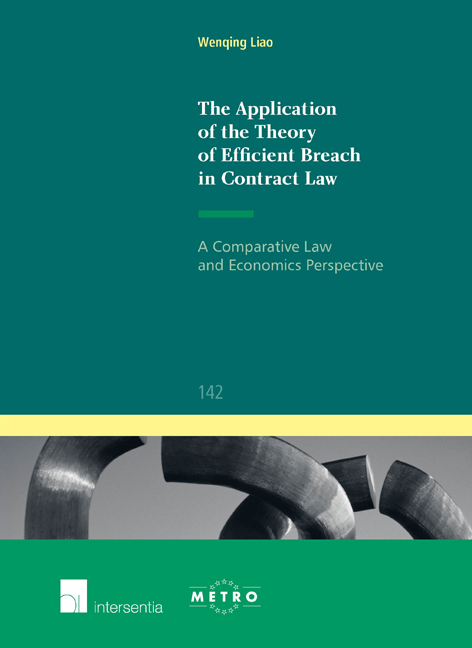 The Application of the Theory of Efficient Breach in Contract Law
The Application of the Theory of Efficient Breach in Contract Law Published online by Cambridge University Press: 12 December 2017
Since the legal remedy rules are able to put a price on breach, then they can alter the incentives of the party who regrets entering into a contract, which will affect the probability of breach. In a simple model, it is assumed that the higher the extent of the remedy, the more costly the breach and the weaker the parties’ incentives to breach. According to Shavell, a high damage measure, even punitive damages measure is the best if a contract is completely drafted on the basis of the parties’ rational decisions and there are no transaction costs. In a completely specified contract which is established by the consensus of the parties, performance would always be efficient and a high level of remedy would give full guarantee for performance. Nevertheless, most contracts in the real-world are incomplete and transaction costs exist within transactions. In this sense, a moderate level of remedy is considered to be efficient.
This chapter will answer how different contract remedy models can affect efficient breaches and efficiency when the elements of economic surplus, transaction costs, just compensation as well as risk allocation are all taken into account. The question will be addressed of how different remedy rules will deal with a situation where performing the original contract is inefficient. As is mentioned in chapter 4, remedies of contract can be presented in the form of either making a person who breaches perform the contract specifically or making him pay an amount of money. Following this logic, section 1 will develop the comparison between specific performance and expectation damages. It will be structured by analysing these two types of remedies within contexts of a contract to produce a product and a contract to convey a product respectively. Subsequently, section 2 and 3 will focus on monetary remedies. Specifically, section 2 will make a distinction among different types of monetary remedies which is defined by law, including restitution, reliance damages, expectation damages and disgorgement.
To save this book to your Kindle, first ensure [email protected] is added to your Approved Personal Document E-mail List under your Personal Document Settings on the Manage Your Content and Devices page of your Amazon account. Then enter the ‘name’ part of your Kindle email address below. Find out more about saving to your Kindle.
Note you can select to save to either the @free.kindle.com or @kindle.com variations. ‘@free.kindle.com’ emails are free but can only be saved to your device when it is connected to wi-fi. ‘@kindle.com’ emails can be delivered even when you are not connected to wi-fi, but note that service fees apply.
Find out more about the Kindle Personal Document Service.
To save content items to your account, please confirm that you agree to abide by our usage policies. If this is the first time you use this feature, you will be asked to authorise Cambridge Core to connect with your account. Find out more about saving content to Dropbox.
To save content items to your account, please confirm that you agree to abide by our usage policies. If this is the first time you use this feature, you will be asked to authorise Cambridge Core to connect with your account. Find out more about saving content to Google Drive.